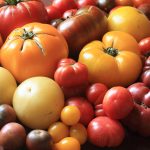Jordan is refusing the return of tomato imports to Israel and is demanding an apology from the Israeli Ministry of Health for its “unilateral declaration” concerning the detection of cholera bacteria within the Yarmouk River, which flows through Jordan.
Israel stopped fruit and vegetable imports from Jordan because of concerns over contamination August.
A large portion of Jordan’s exports to Israel are made up of cucumbers as well as tomatoes.
Jordanian officials were outraged with the comment and seeking an apology. As of now Israel’s Ministry of Agriculture has opened the duty-free import limit to 5,000 tons of tomatoes between September and December.
- The the consumption of tomatoes in Israel fell by 20.9 percentage, while the price rose by 45%..
- Consumption of potatoes decreased by 3.7 percentage, while the price increasing by 29.5 percentage.
- Consumption of cabbage fell by 4 percent, while the cost of cabbage increased by 25.5 percentage.
- Cucumber consumption decreased by 0.9 percent, and costs rising by 23.5 percentage.
- The consumption of sweet peppers fell by 9.1 percent, while the price rose up to 20.9 percentage.
Source: newsru.co.il
